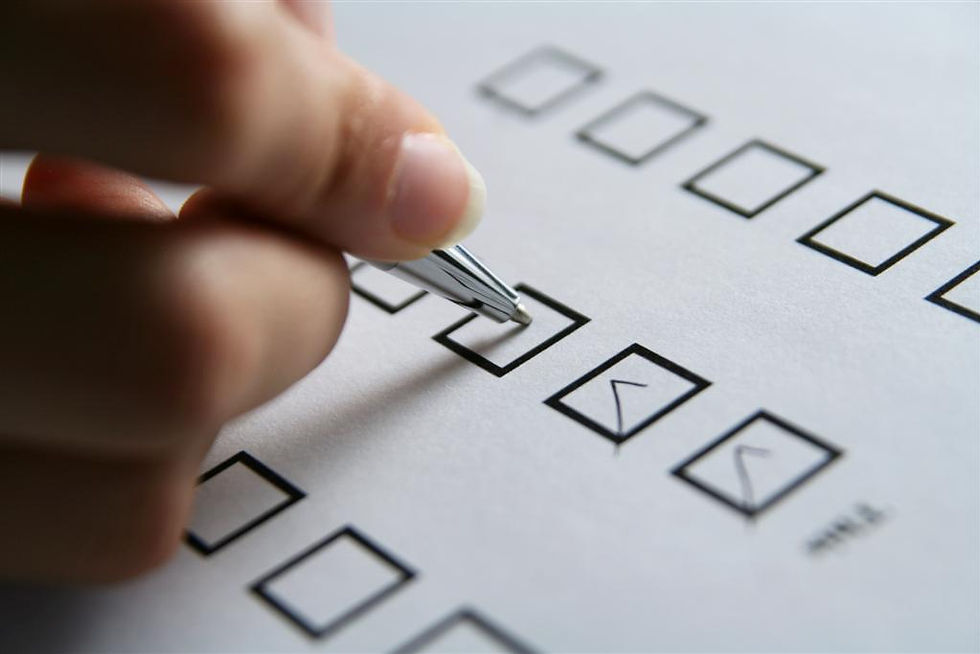The Hamstrings: Anatomy Review and Injury Prevention
- Elizabeth Karr PT, DPT
- Aug 18, 2025
- 3 min read
Updated: Sep 11, 2025

The hamstrings are a muscle group that most people are familiar with - often because they are tight, or have been strained. In this blog post, we will review hamstring anatomy and function, what can go wrong, and how to prevent injuries through strengthening.
Anatomy:
First off, did you know that the hamstrings are not one muscle but a group of 3 muscles? The hamstring group consists of the biceps femoris (a muscle with two heads aka two different origin points), the semitendinosus, and the semimembranosus. The long head of the biceps femoris, semitendinosus, and semimembranosus all originate at the ischial tuberosity aka your "sit bone" and therefore can function both to bend the knee, and extend the hip. These three are all innervated by the tibial division of the sciatic nerve. The short head of the biceps femoris does not cross the hip joint and therefore only flexes the knee, and is the only one innervated by the common peroneal division of the sciatic nerve. The biceps femoris lies on the outer side of the back of the thigh, while the semitendinosus and semimembranosus are on the inner side of the back of the thigh.
Injury:
Now that you know that the hamstring muscles function to primarily bend the knee and also act as a hip extensor, you can understand how they may be injured. Here are some common mechanisms of injury:
Sprinting: during the late swing phase as the leg passes in front of the body before landing, the hamstrings control the leg position as the knee goes from a bent position to a more extended position. This places an eccentric load on the hamstrings where the muscles are lengthening as they are contracting, which places a lot of strain n these muscles and can lead to injury.
A quick stop or catching self from a slip: when the foot wants to slide forwards either due to momentum or a slick surface, the hamstrings will quickly engage to pull the lower leg and foot back to prevent falling, which can strain the hamstrings.
Overuse due to muscle imbalance: if the glutes (which should be the primary hip extensor) are weak or not firing properly, the hamstrings (the secondary hip extensors) will kick in to help. Overtime, this can place excessive load on hamstrings resulting in injury.
Exercises:
Strengthening the hamstrings and glutes can help reduce the risk of injury. Here are some exercises to try. This list is not exhaustive, but just a few of my favorites. Many exercises can be made easier by performing with two legs, or harder by performing single leg variations. Give one or two of these a try about three times per week, 3 sets of 6-12 depending on the weight you use and how challenging it feels (you should be tired by the end of the set!)
Hamstring Curl on Ball: This exercise focuses on loading the hamstring concentrically (muscle is shortening while contracting). Focus on keeping your hips lifted throughout the exercise
Single Leg RDL: This exercise loads the hamstring more eccentrically, while also engaging the glutes and providing a balance challenge.
Hip Thruster: This exercise is primarily a glute exercise - stronger glutes can help take excess load off of the hamstrings. Additionally, the hamstrings are stretched at their proximal attachment at the bottom of the movement, so they experience some eccentric load here as well. Add weight or try a single leg variation to increase challenge.
Nordic Hamstring Curl: This exercise is the most challenging eccentric exercise. Performing is especially helpful for athletes like sprinters, who place large eccentric loads on their hamstrings. Lower your body as far as you can without hinging at the hips. Use a band to assist the movement as you build strength. This is easier if you can have a partner hold your feet!
I hope that this helped you better understand your hamstrings, how they help you move, how they can be injured, and how you can strengthen them!
Thanks for reading,
Dr. Elizabeth Karr PT, DPT, OCS
.jpg)




Comments